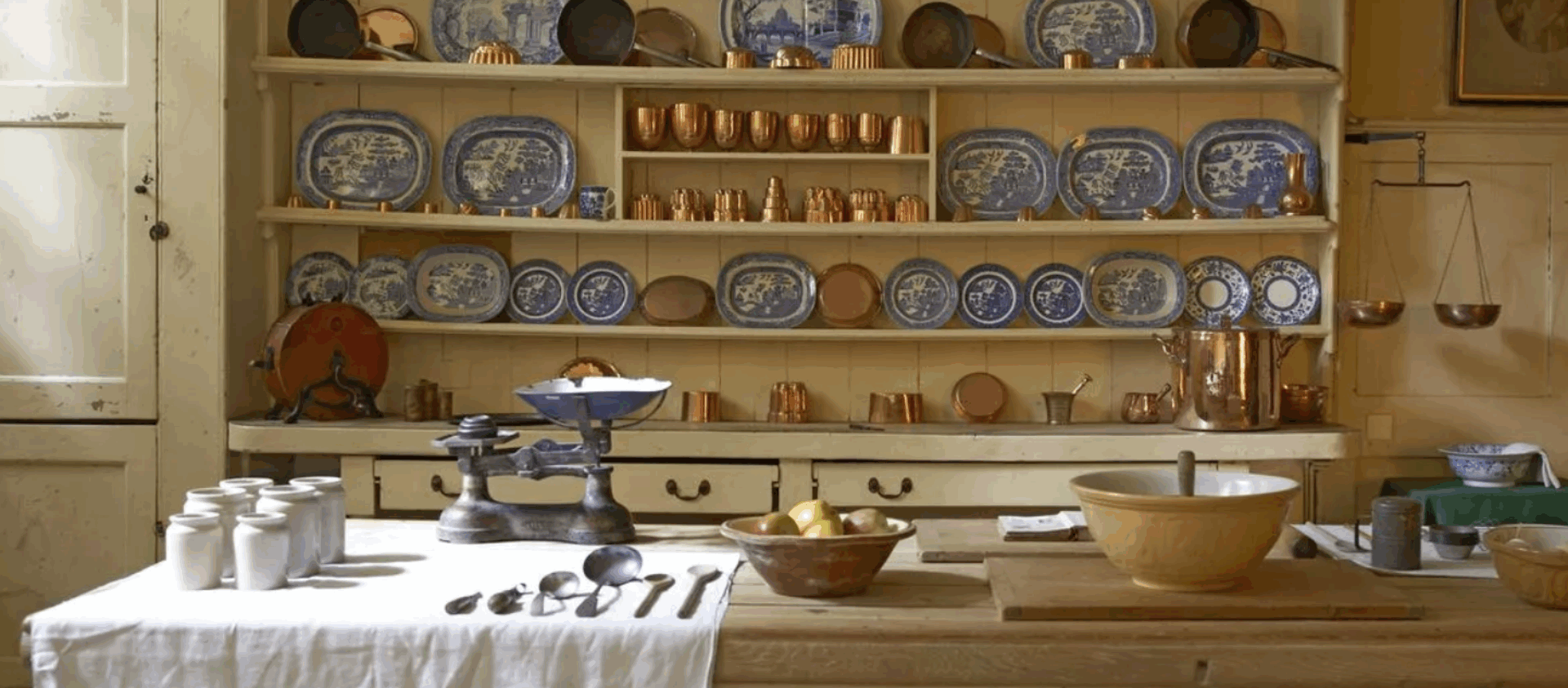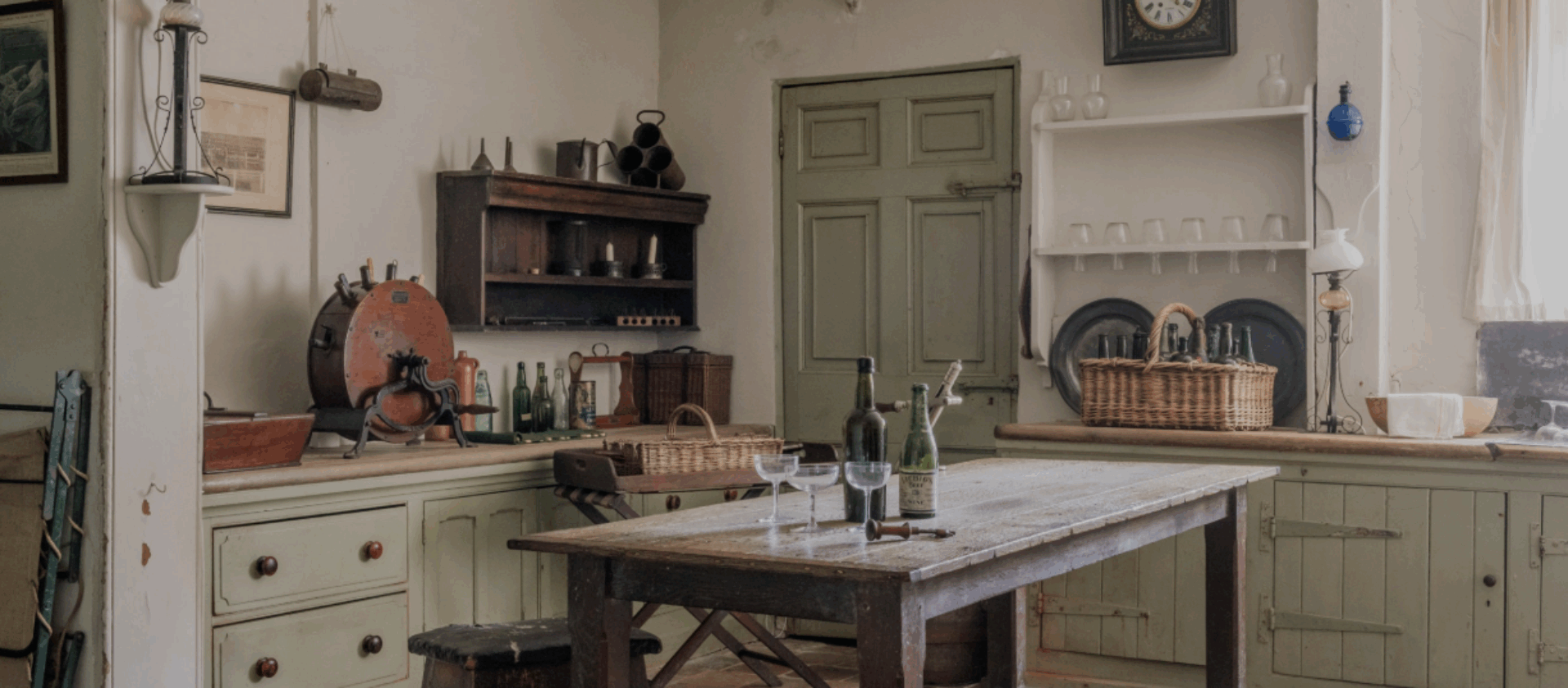Journal
historic back of house spaces & estate cabinetry
Domestic Spaces Which Inspire Us
September. 2025
It is fair to say that as a company there are many historic domestic spaces which inspire us. It is a regular observation when visiting any historic country house for a study trip, that the back of house spaces seem to trigger most excitement from visitors. This is because everyone can relate to these rooms of utility. Most of us prepare food and cook. Most of us need larder storage. Most of us would love a boot room. Most of us can imagine these spaces being used. These are rooms designed for hard work, executed with beauty and care by the estate joiner.
Conversely, few of us have libraries and few of us live in such a manner that a drawing room is relevant or conducive to modern family living. They are perhaps rooms to aspire to, but not rooms we have much in common with.
We share a deep affinity to the domestic spaces of these houses, and we have done ever since we were asked to undertake a partial renovation of the Butler’s pantry at the National Trust’s Buscot Park in 2017. The detail in each space inspires us and we have picked up on details and used them in many projects, from cottages to manor houses.
These are some of the notable examples of historic back of house spaces and estate cabinetry from which we draw inspiration.
PETWORTH, HOUSE & PARK, WEST SUSSEX
This magnificent 17th century house is set in a 700-acre deer park and displays some remarkable and beautifully detailed kitchens and working spaces.
UPPARK HOUSE & GARDEN, WEST SUSSEX
A tranquil 17th century house with intimate gardens and woodland.
LANHYDROCK, CORNWALL
A late-Victorian country house with a magnificent set of kitchens and back of house spaces which inspired our work at nearby Trewithen House.
ERDDIG HALL & GARDEN, WREXHAM, NORTH WALES
A much-loved 18th-century house filled with stories of a family and their servants.
FELBRIGG HALL, GARDENS & ESTATE, NORFOLK
A 17th-century country house with beautiful gardens and parkland.
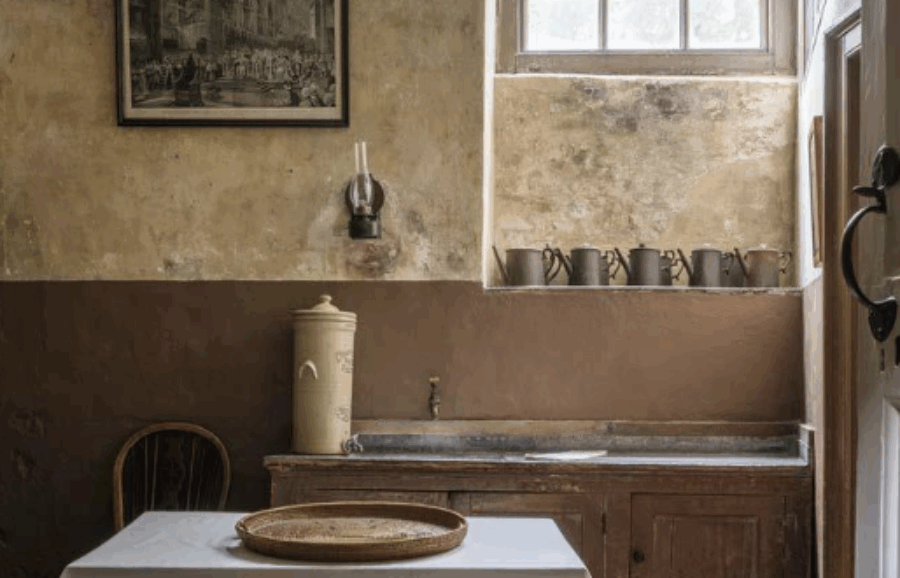
The Scullery at Erddig, Wales. The Scullery was used for the storage of vegetables, fish and meat as well as washing of dishes.
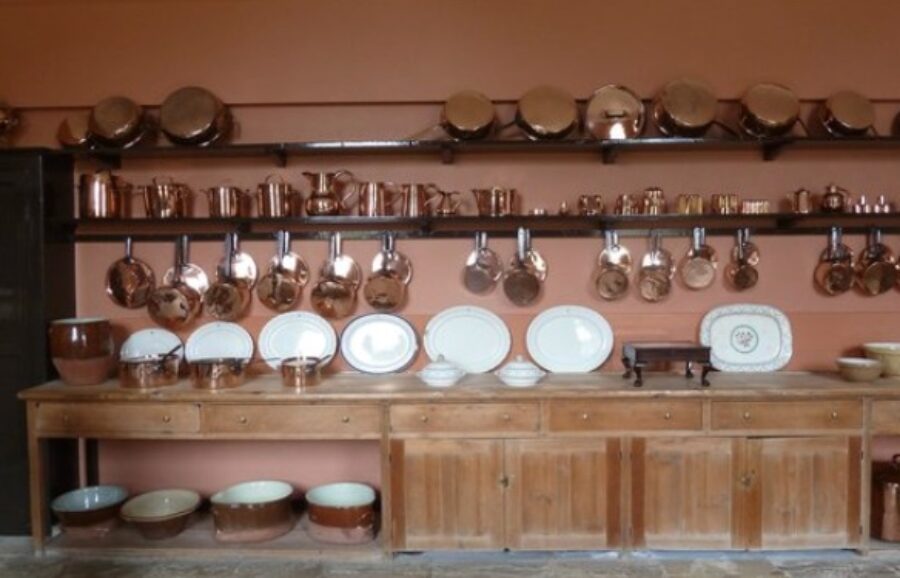
The Kitchen at Felbrigg Hall, Norfolk.
ICKWORTH ESTATE, SUFFOLK
An Italianate palace in the heart of Suffolk.
DUNHAM MASSEY, GREATER MANCHESTER
A Georgian house with a garden for all seasons and an ancient deer park.
TREDEGAR HOUSE, NEWPORT, WALES
One of the most significant late 17th-century houses in Britain.
ATTINGHAM PARK, SHROPSHIRE
An 18th-century mansion with a Regency interior, set in a beautiful parkland.
OSTERLEY PARK & HOUSE, LONDON
A Georgian country estate in the heart of west London.
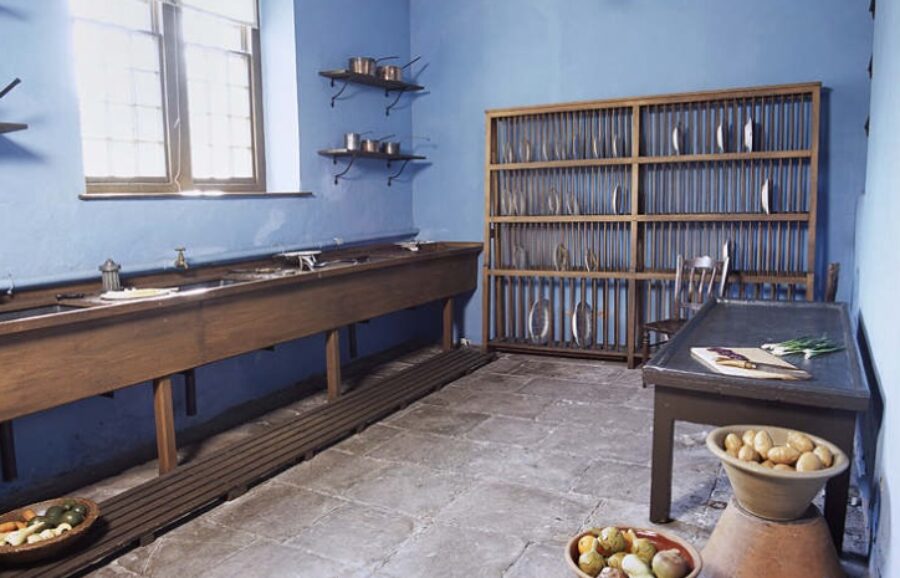
The Plate Scullery, Tredegar House, Newport, c. 1890
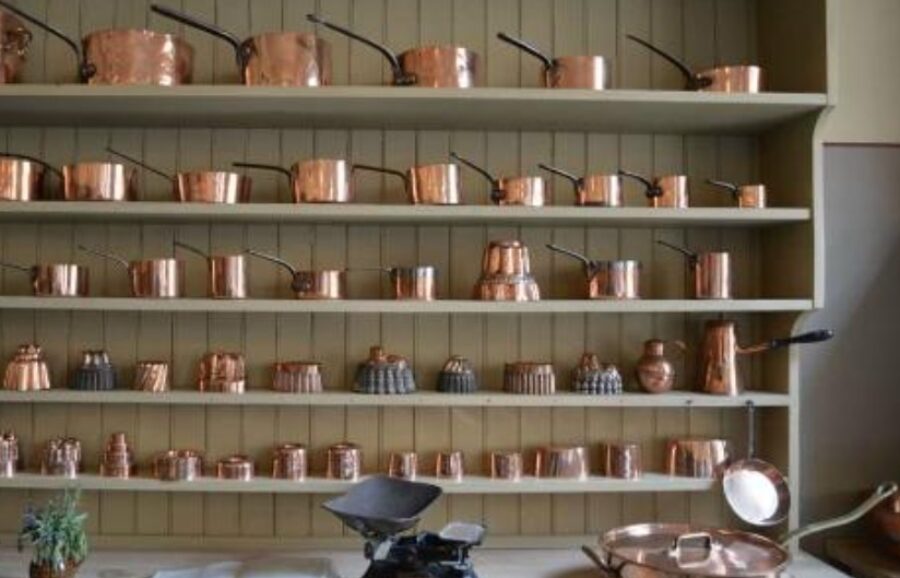
The copper batterie de cuisine collection in the main kitchen at Attingham Park


